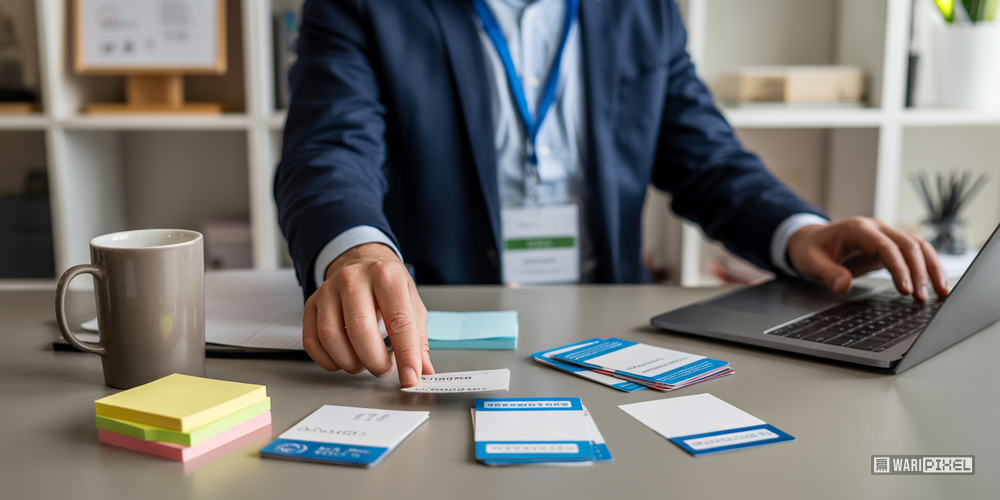Trade Show Mastery: Maximizing Your PPAI Expo Investment
PPAI Expo success begins months before the event with strategic planning that aligns Expo activities with broader business objectives. The most successful distributors approach the Expo with specific goals: new supplier relationships, product line expansion, industry education, or market intelligence gathering. These clear objectives guide pre-show preparation and on-site activities.
Pre-show research and planning separate successful Expo attendees from casual participants. Studying the exhibitor list, mapping booth locations, and scheduling supplier meetings in advance maximizes limited time and ensures important connections aren’t missed. The Expo mobile app and online resources provide valuable planning tools that many distributors underutilize.
The psychology of trade show interactions differs significantly from normal business meetings. Expo environments create urgency, excitement, and information overload that can impair decision-making. Successful distributors prepare structured evaluation criteria and note-taking systems that enable rational assessment despite the sensory bombardment.
Booth strategy for distributors exhibiting at PPAI Expo requires understanding attendee behavior patterns and traffic flows. Prime booth locations command premium prices but provide access to higher-quality prospects. However, creative booth design and strategic positioning can maximize visibility even in less expensive locations.
Product evaluation at PPAI Expo involves more than examining samples and comparing prices. Successful distributors assess supplier reliability, quality consistency, customer service capabilities, and long-term partnership potential. These factors often matter more than initial pricing for sustainable business relationships.

Networking effectiveness at PPAI Expo depends on preparation, strategy, and follow-up systems. The most successful distributors research attendee lists, identify target connections, and schedule specific meetings. They also prepare elevator pitches, business cards, and follow-up materials that facilitate meaningful relationship building.
Educational session selection should align with business development priorities and knowledge gaps. PPAI Expo offers dozens of educational opportunities covering industry trends, business strategies, and operational improvements. Successful distributors prioritize sessions that provide actionable insights rather than general information.
Technology utilization enhances PPAI Expo effectiveness through digital business cards, contact management apps, and real-time communication tools. Many distributors use smartphones to photograph products, record voice notes, and maintain digital records of important conversations. These tools prevent information loss and facilitate better follow-up.
Budget management for PPAI Expo extends beyond registration and travel costs to include time investment, opportunity costs, and follow-up activities. The total cost of Expo participation often exceeds $10,000 per attendee when all factors are considered. Understanding these costs helps justify the investment and measure ROI accurately.

Follow-up strategy determines whether PPAI Expo investments generate long-term business value. The most successful distributors have systematic follow-up processes that begin immediately after the show. These processes include contact organization, priority ranking, and scheduled follow-up activities that maintain momentum from Expo connections.
Competitive intelligence gathering at PPAI Expo provides valuable market insights that inform strategic planning. Observing competitor activities, new product launches, and industry trends helps distributors anticipate market changes and identify opportunities. However, this intelligence gathering must be ethical and professional.
Supplier relationship development at PPAI Expo requires balancing new opportunities with existing partnerships. While exploring new suppliers, successful distributors also strengthen relationships with current partners through face-to-face meetings and strategic discussions. These existing relationships often provide the most immediate business value.
The role of social media in PPAI Expo participation continues expanding as distributors share experiences, connect with contacts, and extend their reach beyond physical attendance. Strategic social media use can amplify Expo investments by reaching broader audiences and maintaining engagement after the event ends.
Measuring PPAI Expo ROI requires establishing baseline metrics and tracking systems that connect Expo activities to business results. Successful distributors track new supplier relationships, product line additions, sales increases, and other measurable outcomes that justify their Expo investments. This measurement enables continuous improvement in Expo strategies.
PPAI Expo success requires strategic planning, systematic execution, and disciplined follow-up. The distributors who treat the Expo as a strategic business initiative rather than an industry party generate significantly higher returns on their investments.
Maximize your trade show impact with our exclusive collection of 12 professional images showcasing successful trade show participation, networking excellence, and business development activities. These images help you communicate your industry engagement and professional presence to clients and prospects. Download your free trade show mastery image collection and demonstrate your commitment to industry leadership.